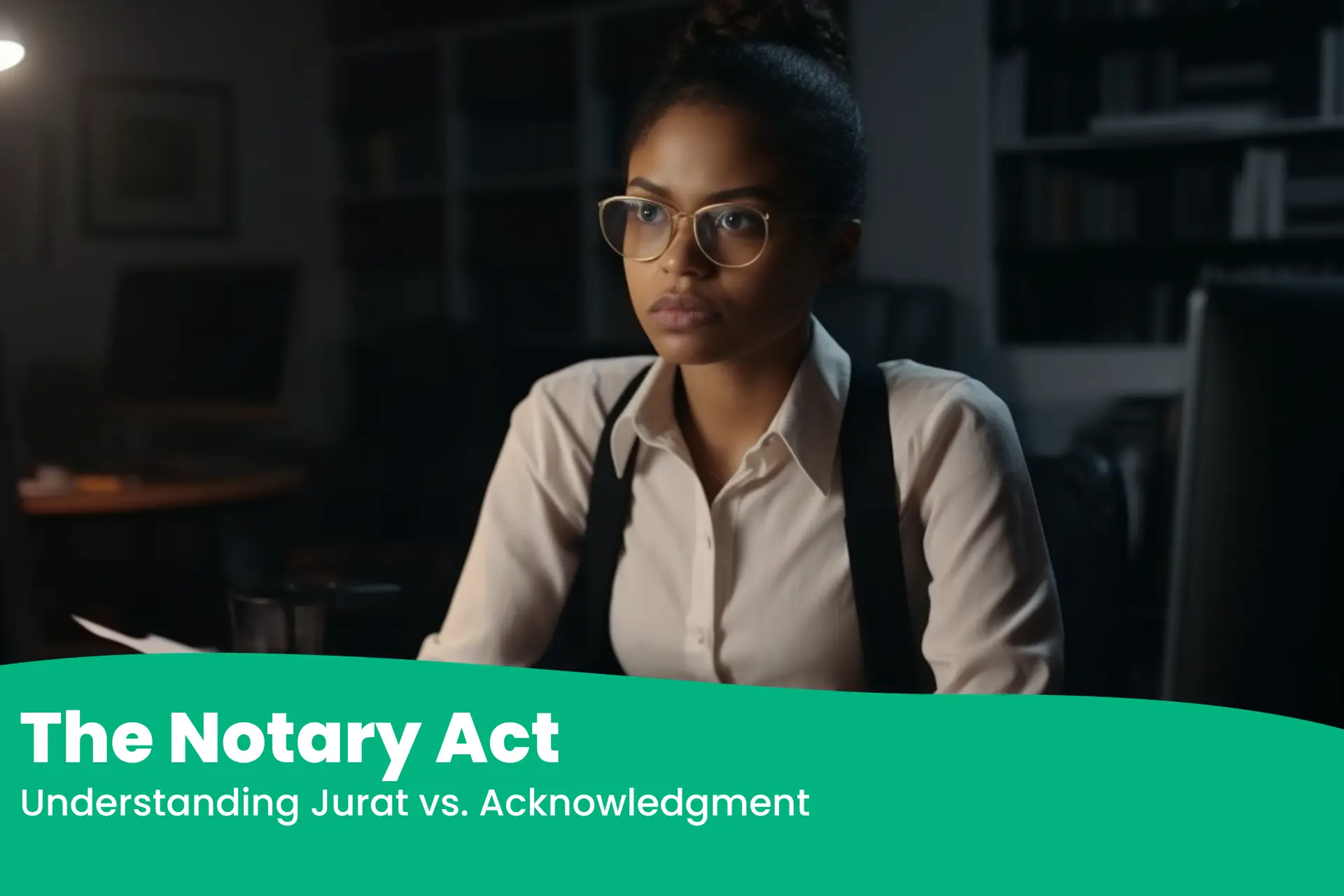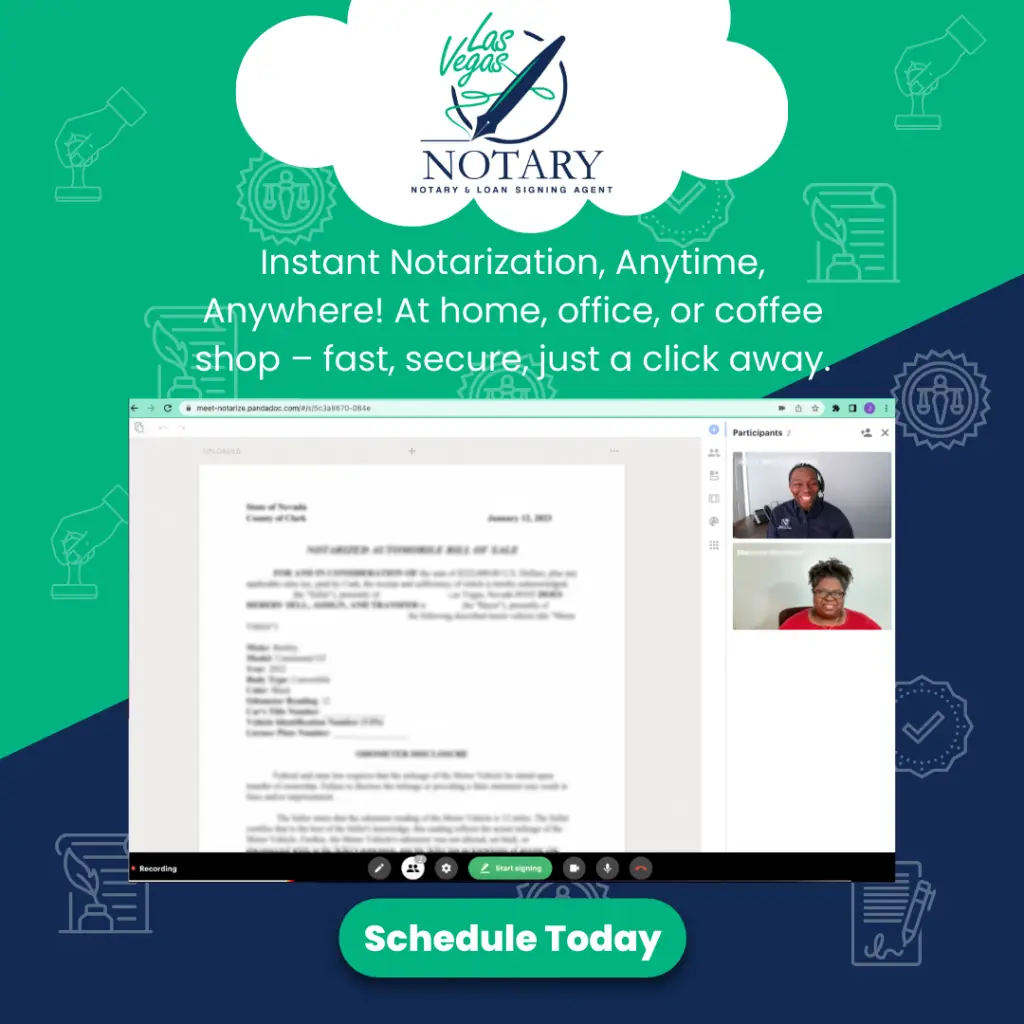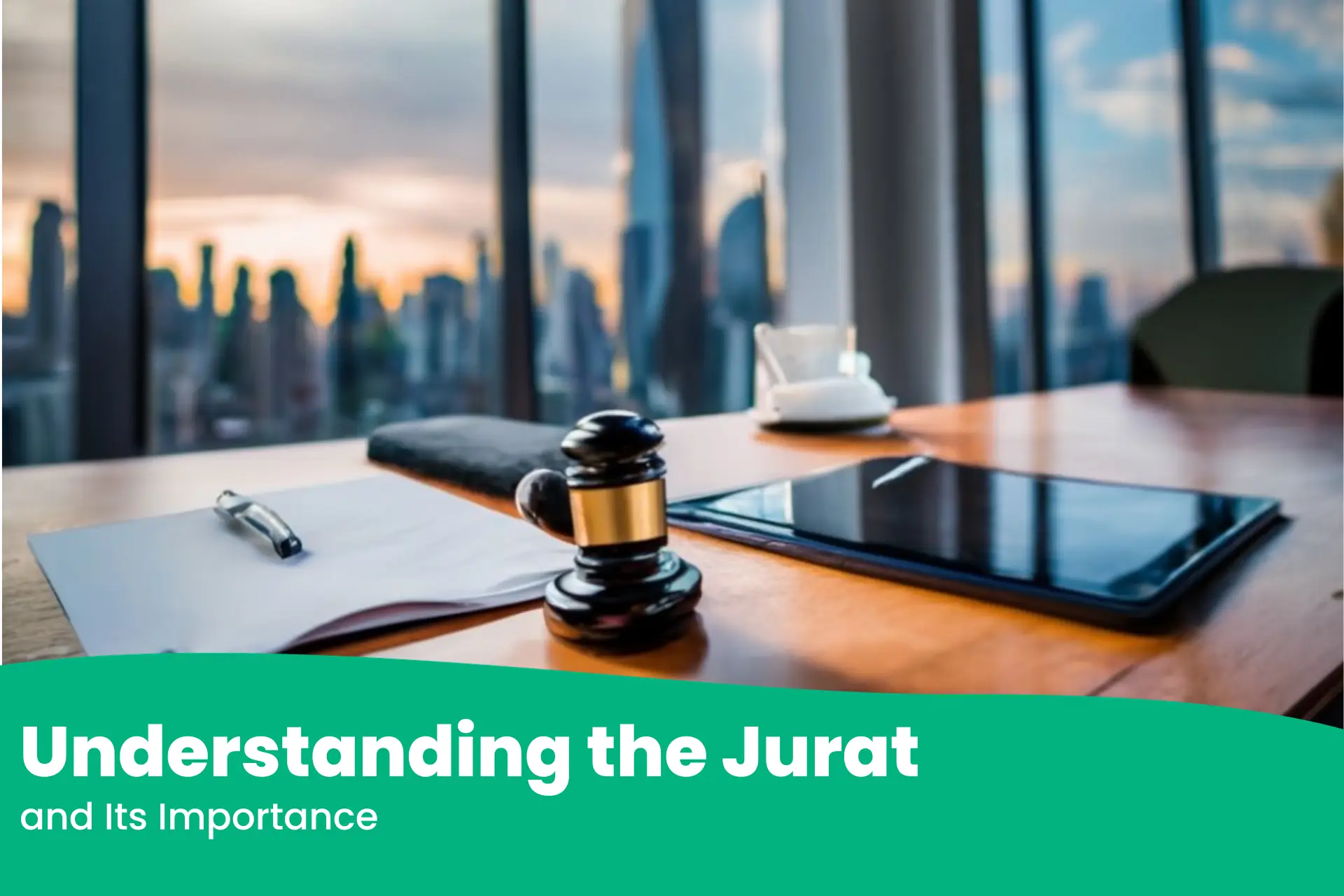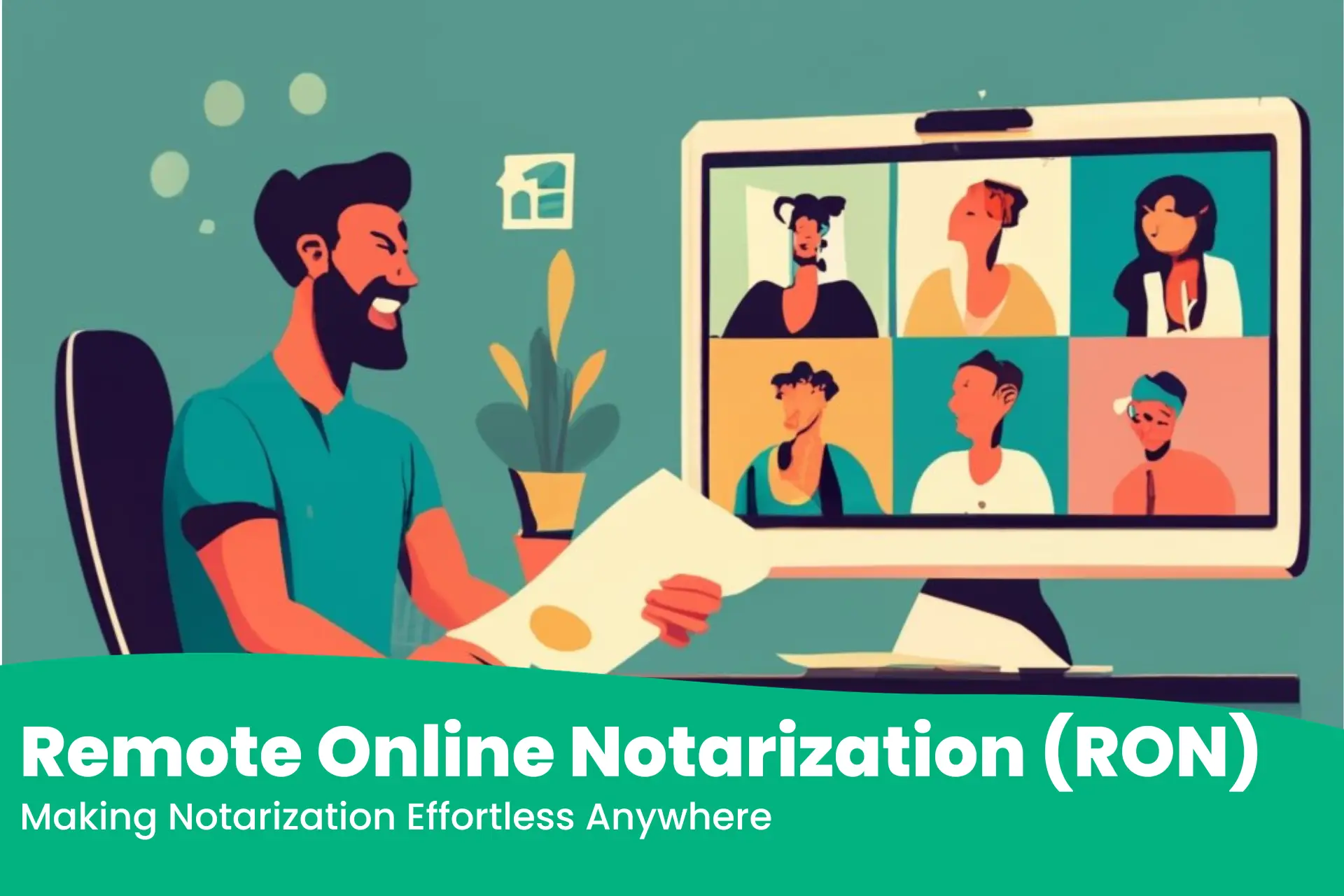Are you unsure about the difference between a Jurat and an Acknowledgment? Don’t worry, you’re not alone. These terms often confuse, but it’s essential to understand their distinctions, especially when dealing with legal documents. In this article, we will explore the purpose, differences, and requirements of both Jurat and Acknowledgment, empowering you to navigate the intricacies of the notary act confidently.
Understanding the Purpose of a Jurat and Acknowledgment
Notarial acts are crucial in legal proceedings, providing an extra layer of assurance and authenticity to important documents. To determine which notarial act is appropriate for your specific situation, it’s essential to understand their purpose.
A Jurat is used when the signer of a document needs to make a sworn or affirmed statement before a notary public. This requirement is often necessary for documents such as affidavits, depositions, and sworn statements. By signing the document in the presence of a notary, the signer acknowledges the truthfulness and accuracy of the contents under penalty of perjury.
On the other hand, an acknowledgment is used primarily to verify the signer’s identity and the voluntary nature of their signature. It is commonly used for documents like deeds, contracts, and powers of attorney. In this case, the notary public ensures that the signer is who they claim to be and that they are signing the document willingly.
Understanding the differences between a jurat and an acknowledgment can help you choose the right notarial act for your specific needs, ensuring compliance with the necessary legal requirements.
The Differences Between a Jurat and Acknowledgment
While both a jurat and an acknowledgment serve the purpose of validating the authenticity of a document, there are significant differences that set them apart:
Level of Involvement:
- A jurat involves the notary administering an oath or affirmation to the signer.
- An acknowledgment only requires the notary to verify the identity of the signer.
Statement vs. Verification:
- With a jurat, the signer makes a statement or swears to the truthfulness of the document.
- An acknowledgment verifies the signer’s identity and the voluntary nature of their signature.
Types of Documents:
- Jurats are typically used for documents that require a sworn statement, such as affidavits, depositions, and sworn statements.
- On the other hand, acknowledgments are commonly used for documents like deeds, contracts, and powers of attorney.
Understanding these distinctions is crucial to ensure that you choose the right notarial act for your specific needs, avoiding any potential legal complications down the line.
When to Use a Jurat
A jurat is necessary when a document requires a sworn statement or affirmation from the signer. Here are some common scenarios where a jurat is typically used:
- Affidavits: Affidavits are written statements of fact that are sworn or affirmed under oath. When preparing an affidavit, a jurat must validate the contents’ truthfulness.
- Depositions: In legal proceedings, depositions are sworn testimonies given by witnesses or parties involved in a case. A jurat is needed to ensure that the deponent understands the importance of telling the truth and that penalties for perjury bind them.
- Sworn Statements: Sworn statements are used in various situations, such as insurance claims, employment applications, or financial affidavits. A jurat is essential to authenticate the truthfulness of the statement.
These are just a few examples of when a jurat is necessary. When dealing with legal matters, it’s always best to consult a legal professional to determine the appropriate notarial act required for your document.
When to Use an Acknowledgment
Unlike a jurat, an acknowledgment is used primarily to verify the signer’s identity and the voluntary nature of their signature. Here are some common scenarios where an acknowledgment is typically used:
- Deeds: When transferring real estate ownership, a deed is used. An acknowledgment is necessary to ensure that the person signing the deed is indeed the grantor and that they are signing it willingly.
- Contracts: Contracts, whether for business or personal purposes, often require an acknowledgment to verify the parties’ identity and their agreement to the terms and conditions.
- Powers of Attorney: A power of attorney allows someone to act on behalf of another person in legal or financial matters. An acknowledgment is needed to ensure that the person granting the power of attorney is doing so willingly and understands the implications.
These examples highlight the importance of an acknowledgment in establishing the authenticity and voluntary nature of the signatures on crucial documents.
The Legal Requirements for a Jurat
To ensure the validity of a jurat, certain legal requirements must be met. While these requirements may vary depending on the jurisdiction, here are some common elements:
- Presence of the Signer: The signer must appear before the notary public to make their sworn statement or affirmation. This ensures that the signer understands the significance of their statement and is willing to make it under oath.
- Identification of the Signer: The notary public must verify the signer’s identity using acceptable identification documents. This is crucial to prevent fraud and ensure that the person making the statement is who they claim to be.
- Notary’s Certification: The notary public must complete the jurat certificate, including the date, location, and their official seal or stamp. This certification confirms that the signer appeared before the notary and made the sworn statement.
Meeting these legal requirements is essential to ensure the validity and enforceability of the document with a jurat.
The Legal Requirements for an Acknowledgment
Similarly, an acknowledgment must also satisfy specific legal requirements to be considered valid. Here are the typical elements of an acknowledgment:
- Presence of the Signer: The signer must appear before the notary public and acknowledge that they are signing the document willingly and without coercion. This ensures that the signature is voluntary and not obtained under duress.
- Verification of Identity: The notary public must verify the signer’s identity using acceptable identification documents. This step is crucial to prevent identity theft and ensure the person signing the document is the intended party.
- Notary’s Certification: The notary completes the acknowledgment certificate, including the date, location, and their official seal or stamp. This certification confirms that the signer appeared before the notary and acknowledged the voluntary nature of their signature.
By adhering to these legal requirements, the acknowledgment adds an additional layer of authenticity and validity to the document.
How to Properly Complete a Jurat
Completing a jurat correctly is crucial to ensure the document is legally enforceable. Here are the steps to properly complete a jurat:
- Prepare the Document: Ensure that the document includes a space for the jurat, usually at the end of the document. The jurat should clearly state that the signer appeared before the notary and made a sworn statement.
- Appear Before the Notary: The signer must physically appear before the notary public to make their sworn statement. This ensures that the notary can witness the oath or affirmation.
- Administer the Oath or Affirmation: The notary public will administer the oath or affirmation to the signer. The exact wording may vary depending on the jurisdiction, but it generally requires the signer to acknowledge the truthfulness of the document.
- Sign the Document: After making the sworn statement, the signer must sign the document in the notary public’s presence. This signature confirms their acknowledgment of the truthfulness of the contents.
- Complete the Jurat Certificate: The notary public must complete the Jurat certificate, including the date, location, and their official seal or stamp. This certification confirms that the signer appeared before the notary and made the sworn statement.
Following these steps, you can ensure the jurat is properly completed, adding the necessary legal weight to your document.
How to Properly Complete an Acknowledgment
To ensure the validity of an acknowledgment, it’s important to complete the required steps correctly. Here’s a guide on how to properly complete an acknowledgment:
- Prepare the Document: The document should include a space for the acknowledgment, typically near the end. The acknowledgment should clearly state that the signer appeared before the notary and acknowledged the voluntary nature of their signature.
- Appear Before the Notary: The signer must physically appear before the notary public to acknowledge their signature. This allows the notary to verify the signer’s identity and ensure the signature is voluntary.
- Verify the Identity of the Signer: The notary public must verify the signer’s identity using acceptable identification documents. This step is crucial to prevent fraud and ensure that the signer is who they claim to be.
- Acknowledge the Signature: The signer must acknowledge that they are signing the document willingly and without coercion. This step confirms the voluntary nature of the signature.
- Sign the Document: After acknowledging the signature, the signer must sign the document in the notary public’s presence. This signature confirms their acknowledgment of the voluntary nature of their signature.
- Complete the Acknowledgment Certificate: The notary public completes the acknowledgment certificate, including the date, location, and their official seal or stamp. This certification confirms that the signer appeared before the notary and acknowledged the voluntary nature of their signature.
By following these steps, you can ensure the acknowledgment is properly completed, providing the necessary validation to your document.
Common Mistakes to Avoid When Using a Jurat or Acknowledgment
While using a jurat or acknowledgment is essential for validating legal documents, there are common mistakes that you should avoid to ensure their effectiveness:
- Failure to Appear Before the Notary: It is crucial for the signer to physically appear before the notary public to make the required statement or acknowledge their signature. Failing to do so may render the document invalid.
- Inadequate Identification: The notary public must verify the signer’s identity using acceptable identification documents. Failing to identify the signer properly may lead to issues with the document’s validity.
- Incomplete or Incorrect Certificates: The jurat or acknowledgment certificate must be completed accurately and fully. Any missing information or errors in the certificate can undermine the legal validity of the document.
- Lack of Understanding: It’s essential to clearly understand when to use a jurat and when to use an acknowledgment. Using the wrong notarial act can lead to legal complications and potential challenges to the document’s validity.
By avoiding these common mistakes, you can ensure that your jurat or acknowledgment serves its intended purpose and holds up to legal scrutiny.
Conclusion: Choosing the Right Notarial Act for Your Needs
Understanding the differences between a jurat and an acknowledgment is crucial when dealing with legal documentation. While both serve similar purposes of validating documents, their distinctions lie in the level of involvement of the notary public.
A jurat requires the signer to make a sworn statement or affirmation before the notary. At the same time, an acknowledgment involves the notary verifying the signer’s identity and the signature’s voluntary nature.
By understanding when to use a jurat and when to use an acknowledgment, as well as the legal requirements and proper completion steps for each, you can ensure that your documents are legally enforceable and meet all necessary standards.
So, the next time you encounter these terms, you’ll have the knowledge to navigate through the intricacies of legal documentation confidently. Consulting with a legal professional is always recommended to ensure compliance with specific jurisdictional requirements.
If you require the services of a notary public in Las Vegas, look no further than Las Vegas Notary. Our team of experienced notaries is ready to assist you with your document authentication needs. Book an appointment or call us at 702-659-5008 to learn more.





